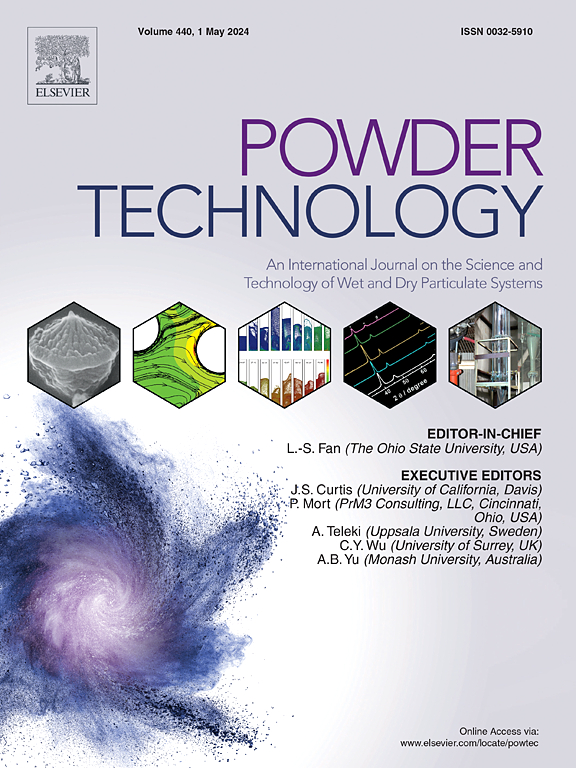On fluidization dynamics of Geldart D particles
IF 4.5
2区 工程技术
Q2 ENGINEERING, CHEMICAL
引用次数: 0
Abstract
Geldart D particles have not received similar attention to other groups vis-à-vis fluidization behavior. An attempt to close this research gap is made using Coarse-Grained CFD-DEM simulations of the Small Scale Challenge Problem 1. The system's dynamics are investigated for different modeling conditions including drag correlations, particle deposition scheme, particle size distribution, statistical weight, and friction within the open-source code MFIX. The results are presented in terms of the fluidization/defluidization cycles and granular temperature. The minimum fluidization velocity (Umf) deviation and modified dynamic Hausner Ratio (MDHR) are also employed to investigate the dynamic behavior. Geldart D literature correlations for Umf are assessed and compared with numerical predictions and experimental measurements. Hydrodynamic forces (HDFs) rather than interparticle forces (IPFs) are the main drivers for fluidization for large particles. The selection of correct modeling options is essential for capturing accurate dynamic behavior.
Geldart D颗粒流化动力学研究
Geldart D颗粒在-à-vis流化行为方面没有受到其他基团的类似关注。利用小尺度挑战问题1的粗粒度CFD-DEM模拟,试图缩小这一研究差距。在开源代码MFIX中,研究了不同建模条件下的系统动力学,包括阻力相关性,颗粒沉积方案,粒径分布,统计重量和摩擦。给出了流化/脱流化周期和颗粒温度的计算结果。采用最小流化速度(Umf)偏差和修正动态豪斯纳比(MDHR)对其动态特性进行了研究。对Umf的Geldart D文献相关性进行了评估,并与数值预测和实验测量进行了比较。流体动力(HDFs)而不是颗粒间力(IPFs)是大颗粒流化的主要驱动力。选择正确的建模选项对于捕获准确的动态行为至关重要。
本文章由计算机程序翻译,如有差异,请以英文原文为准。
求助全文
约1分钟内获得全文
求助全文
来源期刊

Powder Technology
工程技术-工程:化工
CiteScore
9.90
自引率
15.40%
发文量
1047
审稿时长
46 days
期刊介绍:
Powder Technology is an International Journal on the Science and Technology of Wet and Dry Particulate Systems. Powder Technology publishes papers on all aspects of the formation of particles and their characterisation and on the study of systems containing particulate solids. No limitation is imposed on the size of the particles, which may range from nanometre scale, as in pigments or aerosols, to that of mined or quarried materials. The following list of topics is not intended to be comprehensive, but rather to indicate typical subjects which fall within the scope of the journal's interests:
Formation and synthesis of particles by precipitation and other methods.
Modification of particles by agglomeration, coating, comminution and attrition.
Characterisation of the size, shape, surface area, pore structure and strength of particles and agglomerates (including the origins and effects of inter particle forces).
Packing, failure, flow and permeability of assemblies of particles.
Particle-particle interactions and suspension rheology.
Handling and processing operations such as slurry flow, fluidization, pneumatic conveying.
Interactions between particles and their environment, including delivery of particulate products to the body.
Applications of particle technology in production of pharmaceuticals, chemicals, foods, pigments, structural, and functional materials and in environmental and energy related matters.
For materials-oriented contributions we are looking for articles revealing the effect of particle/powder characteristics (size, morphology and composition, in that order) on material performance or functionality and, ideally, comparison to any industrial standard.
 求助内容:
求助内容: 应助结果提醒方式:
应助结果提醒方式:


